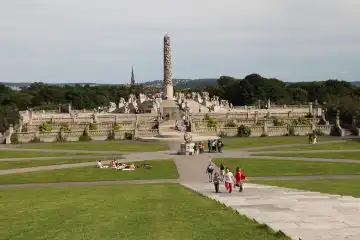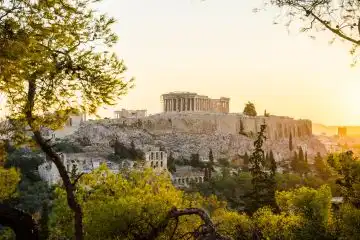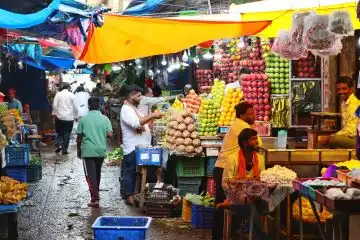Explore the gardens and historic sites of Marrakech Morocco
Marrakech is a city that dances to the rhythm of centuries past while flourishing in the present. Exploring the serene gardens and historic sites of Marrakech Morocco offers a truly immersive experience. Nestled at the foot of the Atlas Mountains, this is firstly a Moroccan jewel. That is famed for its vibrant souks, architectural masterpieces, and tranquil green spaces. They are perfect for travelers looking to delve further deeper than just surface beauty. These living landmarks reflect the artistic, spiritual, and intellectual legacy that defines the city's identity. From regal palaces and sacred mosques to painterly botanical gardens, each site tells a compelling story.
Vibrant Life at Jemaa el-Fnaa Medina
To understand Marrakech, one must begin in its historic heart-the Medina and the famed square of Jemaa el-Fnaa. This UNESCO World Heritage Site is more than a central hub; it's the cultural soul of the city. The square comes alive at all hours. It brims with musicians, snake charmers, orange juice vendors, and locals exchanging stories. We have curated a gide to explore the top places of Cape Town also. You can refer that to plan a trip. However, it's a sensory overload and a perfect introduction to the city's rhythm.
The Medina surrounding Jemaa el-Fnaa is a labyrinth of narrow alleys. That further lead to centuries-old souks, caravanserais, and hidden riads. Every corner seems to hold a secret, from spice markets to ancient hammams. That firstly offers glimpses into traditional Moroccan life. As the city evolved, this core remained a constant-a testament to Marrakech's enduring charm and cultural resilience.
Spiritual Majesty at the Koutoubia Mosque
Not far from Jemaa el-Fnaa stands the Koutoubia Mosque. It is an architectural marvel and spiritual anchor for the city. Its commanding minaret is firstly visible from miles away. They further stands as a beacon of Islamic devotion and Almohad elegance. This one of the great historic sites of Marrakech Morocco was constructed in the 12th century. Above all, the mosque reflects the period's architectural purity. That is visible in its symmetrical arches, intricate stucco work, and elegant proportions.
However, non-Muslims are not permitted inside. But, the surrounding gardens provide a quiet place to reflect and admire the mosque's grandeur. Stroll through the landscaped pathways lined with palms and roses. Meanwhile, listen to the call to prayer echoes softly across the city-linking past to present. The Koutoubia is not only a place of worship; but also a symbol of the religious and architectural legacy. That further defines many historic sites of Marrakech Morocco.
Regal Beauty in the Bahia Palace
The Bahia Palace represents one of the most refined examples of Moroccan and Islamic design. That offers visitors a glimpse into royal life during the late 19th century. It was created by Grand Vizier Si Moussa and after that expanded by his son. The palace was intended to be the greatest of its time. Above all, its name, meaning “brilliance”, is well deserved.
Inside, You will find 150 rooms adorned with exquisite cedar wood carvings, stained glass, and zellige tile work. Each room further leads into serene courtyards where orange trees bloom beside marble fountains. The Andalusian-style garden at the palace's center adds an element of peace. That meanwhile contrasts with the detailed artistry of the walls and ceilings. The Bahia Palace is not only beautiful but also deeply emblematic of the opulence. That had once defined Moroccan nobility.
Majorelle Garden: A Fusion of Art and Botany
One of Marrakech's most iconic green spaces, Majorelle Garden. It firstly offers a vivid escape into a world of color and tranquility. This garden was originally designed by French painter Jacques Majorelle in the 1920s. After that, this garden was restored by famed fashion designer Yves Saint Laurent and Pierre Bergé. The combination of botanical wonder and bold visual design makes this space unlike any other.
Cobalt-blue walls and pathways provide a striking backdrop to an exotic array of flora. Cacti, bamboo, water lilies, and date palms firstly create a lush mosaic of texture and life. The sound of trickling fountains and chirping birds further enhances the meditative atmosphere. Within the garden lies the Berber Museum. It houses artifacts that celebrate North Africa's indigenous heritage. Majorelle Garden is not only a destination but also a living work of art. That meanwhile blends European influence with Moroccan spirit.
Discovering the Royal Tombs of the Saadian Dynasty
Tucked behind the Kasbah Mosque in the southern Medina, the Saadian Tombs. They are among the most atmospheric historic sites of Marrakech Morocco and must visit. It was rediscovered in the early 20th century after being sealed off for centuries. Above all, the tombs date back to the late 1500s. It meanwhile house the remains of Sultan Ahmed al-Mansur and his descendants.
The mausoleums are adorned with delicate Italian marble, calligraphic inscriptions, and honeycomb plasterwork. That firstly reflect the artistic grandeur of the Saadian era. The Chamber of the Twelve Columns, the final resting place of the sultan, is particularly breathtaking. This one of the famous historic sites of Marrakech Morocco is surrounded by serene gardens and shaded pathways. The site serves as a quiet reminder of Morocco's imperial heritage and reverence for its rulers.
Tracing a Glorious Past at El Badi Palace
Though it now lies in ruin, El Badi Palace still evokes the splendor of Morocco's golden age. It was firstly commissioned by Sultan Ahmed al-Mansur. He made it after his victory over the Portuguese in the Battle of the Three Kings. The palace was built using some of the most luxurious materials available at the time. That are onyx from India, gold from Sudan, and marble from Italy.
Walk through the vast courtyards, sunken gardens, and partially collapsed halls. That meanwhile gives visitors a sense of the palace's former majesty. Towering walls and nesting storks add a romantic air to the site. Climbing to the top of the surviving walls offers panoramic views of the Medina. However, El Badi Palace may be a ruin. But, it remains a powerful monument to the ambition and artistry of the Saadian dynasty.
Menara Gardens: Reflections of Peace and Power
A short drive from the city center, lies the Menara Gardens. They firstly offer a refreshing break from the hustle of the souks. Established in the 12th century, the gardens were designed to demonstrate mastery of hydraulic engineering. They further provide the royal family with a place for rest and reflection.
The focal point is a large reservoir. That was used historically to meanwhile irrigate the surrounding olive groves. At its edge stands a 19th-century pavilion. That, when reflected in the water with the snow-capped Atlas Mountains in the background, creates one of the most iconic views in Marrakech. The Menara Gardens exemplify the Moroccan philosophy of harmony between human creation and natural beauty.
Le Jardin Secret: A Hidden Jewel in the Medina
Le Jardin Secret is firstly a lesser-known treasure within Marrakech's labyrinthine Medina. It was once a private palace garden that fell into neglect. That was recently restored to its original glory and opened to the public. Today, it meanwhile serves as an oasis of calm amid the city's energetic rhythm.
The garden is split into two distinct sections. It is an exotic garden filled with international species and an Islamic garden. That is built on principles of symmetry and water-based symbolism. Interpretive panels and exhibitions explain about the traditional irrigation systems, for example the khettara. That were used to further sustain lush gardens in arid climates. Climbing the observation offers sweeping views over the Medina's rooftops. That meanwhile reveal a hidden world behind the ancient walls.
The Ben Youssef Madrasa: Where Faith and Learning Converge
A testament to Marrakech's historical role as a center of education and religious scholarship, the Ben Youssef Madrasa. It stands out further as one of the most beautiful theological colleges in the Islamic world. This was founded in the 14th century and after that rebuilt in the 16th century. Above all, the madrasa could house over 900 students at its peak.
The central courtyard, with its symmetrical arcades and intricate zellige tilework, is awe-inspiring. Verses from the Qur'an adorn the walls, further blending faith with aesthetics. However, it had ceased operating as a college decades ago. The madrasa remains a place of inspiration and architectural brilliance. That is a must-visit among the historic sites of Marrakech Morocco.
The Agdal Gardens: A Royal Orchard Rooted in History
Often overlooked by casual tourists, the Agdal Gardens are an essential piece of Marrakech's environmental and royal legacy. It further spans over 400 hectares and enclosed by ancient pisé (rammed earth) walls. The gardens were created in the 12th century by the Almohads. After that, they were expanded by subsequent dynasties.
These orchards were once fed the royal family and the broader population. It was irrigated by a network of underground canals and cisterns. The gardens further include massive pools that mirror the surrounding landscapes. Above all, they stand as a testament to ancient water management techniques. No doubt, public access is limited to certain days. The Agdal Gardens offer a compelling view into the city's agricultural and regal traditions.
Dar Si Said Museum: A Tribute to Craftsmanship
Set within a 19th-century palace, the Dar Si Said Museum of Moroccan Arts and Crafts. Firstly, this one of the famous historic sites of Marrakech Morocco is a treasure trove of Moroccan artistry. This place was originally built by the brother of the Grand Vizier who commissioned Bahia Palace. Above all, the museum shares much of the same opulence.
Inside, you'll find masterfully carved wooden doors, Berber jewelry, intricate carpets, and antique weaponry. The building itself is just as captivating as the exhibits. That stands out with its painted ceilings and tranquil inner courtyard. It's a place where you can delve further deep into the techniques and stories. That lies behind Morocco's renowned craftsmanship. They meanwhile offer another layer of context to the historic sites of Marrakech Morocco.
The Almoravid Koubba: A Glimpse of Early Islamic Marrakech
Last but certainly not least, the Almoravid Koubba holds the distinction of being the oldest structure in Marrakech. Built in the early 12th century, this is a small domed building. That had served as a ritual ablution center for worshippers of a nearby mosque. Above all, it is the only surviving piece of Almoravid architecture in the city.
Though modest in size, the Koubba has ornamental detailing-especially its floral motifs and geometric carvings. That are an essential study in the origins of Moroccan design. Located close to the Marrakech Museum, the Koubba provides a quiet but profound experience. That is meanwhile ideal for those seeking to trace the city's architectural lineage.
Conclusion: Marrakech-Where Memory, Art, and Nature Coalesce
In short, Marrakech is a city of contrasts, connections, and continuity. Its gardens provide spaces of introspection and peace. While its historical monuments reveal stories of ambition, conquest, faith, and creativity. Together, the lush sanctuaries and the awe-inspiring historic sites of Marrakech Morocco paint a picture of a city. That meanwhile honors its past while embracing the modern traveler.
Wander through the shaded arcades of a madrasa or admire the layered beauty of a palace courtyard. Further, you can simply watch the sunset reflect off an olive-tree-lined pond. In short, Marrakech has a way of staying with you. The historic sites of Marrakech Morocco is not only tourist spots. But, they are also an experience, a narrative, a poem written in stone and shade, waiting to be explored.







